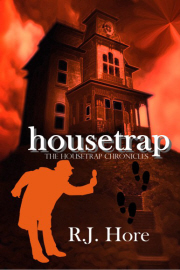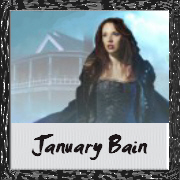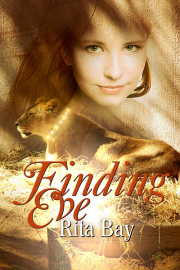Today’s guest, T. Rae Mitchell, offers a terrific post on sparking ideas. Take it away, T.Rae:
~*~
Nothing makes you feel more like a god than the ability to create fantastical worlds with your mind. That being said, nothing makes you feel like the mere mortal you truly are after the endless hours of strain and thinking you put into imagining unique and interesting scenarios readers will want to experience. The pressure to dream up brand new concepts or invent surprising twists on classic fairy tales, myths and legends can be overwhelming.
Thankfully there are some effective ways to jump-start the old idea factory. One is to stir up a sense of magic and wonder in yourself about the characters and world you’re creating. If I’m unable to slip into Wonderland, I can often get there by reading a few pages from my favorite authors. Or sometimes I’ll run a fantasy movie I love in the background, allowing the music, sound effects and dialogue to recharge the excitement I felt the first time I saw the film. Plugging into this head space will often spark ideas I may not have thought of or help me recall ideas forgotten along the way. Also, I think going to your happy place (even if it’s a sinister oak grove full of carnivorous pixies) is essential to the writing, because this spirit of wonder is what readers crave from fantasy. If you’re not feeling the magic, most likely no one else will.
Another trick is to pour through lots of fantasy art. You’ve heard the saying, “A picture’s worth a thousand words.” Well I say there’s a story in every picture. Looking at an otherworldly scene and imagining what is happening in that frozen moment in time is a great idea generator. And because the emerging story is in the eye of the beholder, it will be unique to your way of thinking.
 To a large extent, this is how I came up with several of the fables from my YA fantasy, Fate’s Fables. The premise of my book is about a girl named Fate who’s cast into a Book of Fables. Her only escape is to turn each dark fable into a happily-ever-after, or she’ll remain trapped inside the book forever. Before I could write a single word about Fate’s perilous journey through this magical book, I needed to first create eight fables that read as if they’d been around forever, but were completely new. Talk about the terror of staring at the blinking cursor on the blank white screen of my computer. It wasn’t until I began immersing myself in fables, folklore and myths to get a feel for how they were written, that I discovered how much old fairy tale illustrations sparked my creativity. I remember as a kid how the pictures captured my attention and carried my imagination far beyond what was actually written in the classic tales.
To a large extent, this is how I came up with several of the fables from my YA fantasy, Fate’s Fables. The premise of my book is about a girl named Fate who’s cast into a Book of Fables. Her only escape is to turn each dark fable into a happily-ever-after, or she’ll remain trapped inside the book forever. Before I could write a single word about Fate’s perilous journey through this magical book, I needed to first create eight fables that read as if they’d been around forever, but were completely new. Talk about the terror of staring at the blinking cursor on the blank white screen of my computer. It wasn’t until I began immersing myself in fables, folklore and myths to get a feel for how they were written, that I discovered how much old fairy tale illustrations sparked my creativity. I remember as a kid how the pictures captured my attention and carried my imagination far beyond what was actually written in the classic tales.
One of my fables, The Goblin Queen, was inspired by Arthur Rackham’s illustration, The Magic Cup. This scene portrays an entranced girl staring at a gleaming goblet held in the hands of slithering green creatures coming up out of a murky pool. I wanted to know if she was under their spell. Were they giving her a gift, or luring her into danger? As soon as I began asking questions, the answers formulated into an entire story.
Questions are one of the most powerful methods for activating ideas. I think this is because our brains are wired with a need to know the answers. By asking questions, we automatically slip into filling in the missing pieces of information. In fact, asking a question is how I came up with the idea for Fate’s Fables. I was upset about my favorite bookstore closing, a quaint little place full of eye-catching book displays and book ladders rolling along its century-old brick walls. So one day as I thought about the sad, empty store, I wondered what I might see if I peeked through the windows. Had anything been left behind? Strangely enough, my crazy imagination offered up a giant ten-foot-tall book––a magic Book of Fables to be exact. And then a girl named Fate came to mind and I knew she was destined to plunge inside that big bad book.
So whenever I’m running low on ideas, I remind myself to return to what inspired me to write fantasy in the first place and then I begin mining the deep deposits of creativity that’s literally at my fingertips until I strike another golden vein of magic.
 T. Rae Mitchell is an incurable fantasy junkie who spent much of her youth mesmerizing her younger sisters with stories sprung from her crazy imagination. Over the years, her craving for the rush of being transported to fantastical realms became more acute. So it was only a matter of time before her habit got the best of her. Grief stricken one day upon discovering that her supply had dried up (her favorite bookstore had closed), she decided she’d had enough. Abandoning her career as an award-winning graphic designer, she entered a fantasy world of her own making called Fate’s Fables. She lives in British Columbia with her husband and son who are helping her cope with her addiction. Fate’s Fables is her debut novel.
T. Rae Mitchell is an incurable fantasy junkie who spent much of her youth mesmerizing her younger sisters with stories sprung from her crazy imagination. Over the years, her craving for the rush of being transported to fantastical realms became more acute. So it was only a matter of time before her habit got the best of her. Grief stricken one day upon discovering that her supply had dried up (her favorite bookstore had closed), she decided she’d had enough. Abandoning her career as an award-winning graphic designer, she entered a fantasy world of her own making called Fate’s Fables. She lives in British Columbia with her husband and son who are helping her cope with her addiction. Fate’s Fables is her debut novel.
Find out more about T. Rae and Fate’s Fables here:
Website: http://traemitchell.com
Amazon: amzn.com/dp/B00B6K2EPC
Twitter: https://twitter.com/TRaeMitchell
Facebook: https://www.facebook.com/mitchelltrae
Goodreads: http://www.goodreads.com/author/show/6926344.T_Rae_Mitchell





































great post, t. rae. its always good to have more tricks to help stimulate the old muse… 😉
Yes, unfortunately the muse doesn’t stop by every day.
Hi T. Rae, Fate’s Fables sounds wonderful! I’m looking forward to reading it! Thanks for sharing your tricks for writing your fantasy world
Glad you found it helpful! 😀
Great post. Thank you, T. Rae. I especially like the notion of looking at fantasy art for inspiration.
Pingback: T. Rae Mitchell » Want to know how I come up with my ideas?
Great post, T. Rae! I have in the past taken a short break from writing to watch a scene from a favorite movie, but I haven’t tried playing the movie in the background while I write. I’m so going to try that! Time for me to also gaze at a bit more American West or Victorian London art…
Exactly, it’s all about looking at what you really love. Visuals are powerful. 😉